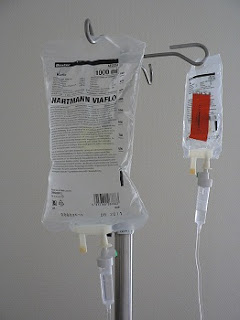It has always been (and always will be) our preference that the information we receive be passed along by people who are competent in the subject at hand. We don't know about you, but we're not in the habit of asking the guy who cuts our grass how to treat strep throat or consult with our physician on how to cut dovetail joints. Sure, some landscapers are retired army medics and some doctors are woodworking hobbyists, but they are the exceptions that prove the rule. That lack of pertinent experience is why we were unimpressed by the job eHowian Rona Aquino performed while attempting to explain "How to Calculate Milligrams Per Hour" for HomeSteady.com.
It's clear from the text that Aquino didn't understand the question, just as it's clear from the placement (HomeSteady? are you kidding?) that someone with Leaf Group was no better at deciding where to "niche" the question. But we digress... We noted Rona's ignorance of the topic right away, given the rather bizarre direction her introduction took in this sentence:
"...if patients are given excessive drug concentrations, such as local anesthetic, consequences may include immobility and pressure ulcers."
Ummm, Rona? Local anesthetics are not administered in milligrams per hour. We're talking about intravenous infusions here, a topic probably not covered in your creative writing classes (maybe if you'd gotten a BS instead of a BA?). In fact, Aquino seemed entirely unaware – even after supposedly reading the references she cited – that the question pertained to the administration of medications in intravenous fluids. Instead, Rona merrily instructed ignorant nursing students to,
"Determine the hourly flow rate. This is the rate of fluid volume, such as medicine, that passes or flows through per unit of time."
Uhhh, yeah. 'Ceptin' we're supposed to determine the rate at which said "medicine" is being adminstered. As an aside, the hourly flow rate is not the "rate of fluid volume... per unit of time," it's the amount of fluid infused per hour – "rate... per unit time" is redundant unless we're discussing acceleration.
Wonder of wonders, Aquino managed to crib a (semi-)correct answer from somewhere, parroting that:
"mg/hour=hourly flow rate x concentration..."
...which is true as long as the flow rate is in milliliters per hour and the concentration is in milligrams per milliliter.
We suspect, however, that our Dumbass of the Day just lucked into that information from a nursing handbook. We're still pretty certain we wouldn't ask her to start an IV on anyone in our family, given her obvious lack of knowledge about the process...
SI - MEDICINE

No comments:
Post a Comment